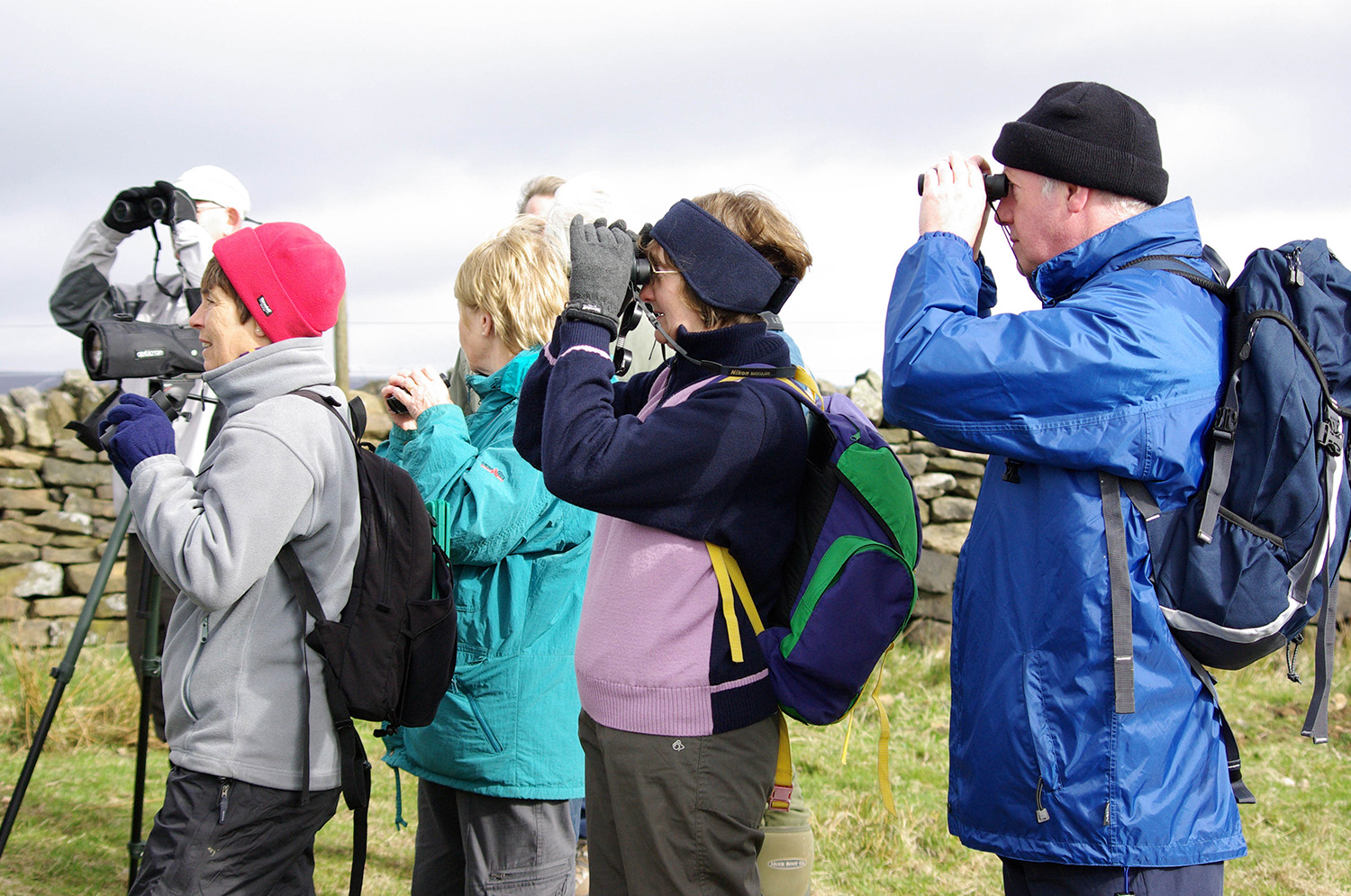Bird watching
If you’re interested in bird watching, this beautiful area of Yorkshire countryside won’t disappoint. The heather moorland in Nidderdale AONB is an important feeding and nesting habitat for red grouse and the more scrubby areas of heath are important for black grouse as well as winchat and stonechat. Ring ouzel, wheatear, meadow pipit and skylark also breed on the open moors.
The moorland areas provide hunting grounds and nesting sites for rare raptors such as merlin and hen harrier, where Peregrine can be found nesting on cliffs. Blanket bog supports breeding golden plover and dunlin. Many other birds such as redshank, curlew, lapwing and snipe nest in rough grazing areas while feeding in boggy patches next to water or on improved grassland next to the moor.
Fancy a day out bird watching? Here are some suggestions and recommendations from a local expert:
Why head to Nidderdale – a naturalist’s view.
“As an all-round naturalist and birder with a day off, one thing would be on my mind – to get out in the field. I’d start early, by which I mean as soon after dawn as possible. I’d choose Nidderdale and I’d target seeing birds and other wildlife that I don’t regularly see. This immediately gives me choices – stay low in the valley or get higher up onto the moors. In the winter I’d stay low as most birds leave the higher ground. If it is spring or early summer then I’d work my way up the Washburn valley, parking up and getting into good habitat via public rights of way or open access land. Explore reservoir edges for common sandpiper and scan water bodies for goosanders and grey herons. Get into the deciduous woodlands and listen for bird song. Redstarts, pied flycatchers, garden warblers and spotted flycatchers will be singing. Hear a cuckoo and track it down – it will be perched high in a tree calling or flying between perches like a grey bird of prey. Enjoy semi-natural woodland at its best for flowers – carpets of bluebells, fresh ferns, wood anemones and wild garlic. Move higher up, say around Greenhow or Scar House Reservoir and scan hillsides for raptors – buzzard, kestrel and more frequently these days, red kite. The iconic grumbling of red grouse will be rolling around the managed moors. Check bracken filled gullies for whinchat, dry stone walls for wheatears and sheep pasture for the chance of the uncommon ring ouzel. Meadow pipits will be everywhere. The better habitat for breeding waders will be occupied by calling curlews, lapwing and snipe. Iconic moorland calls! If it’s sunny then you should see a few butterflies too – which ones rather depends on their flight times. Spring sees orange tips along wooded lanes, speckled woods in woodland glades and green hairstreaks which fly around moorland bilberry. Higher up small coppers and small heaths will be on grassy moorland and in mid-summer ringlets and meadow browns will be in the hay meadows. Mammals are harder to see but I would be watching out for brown hare amongst the commoner rabbits.”
Graham Megson







